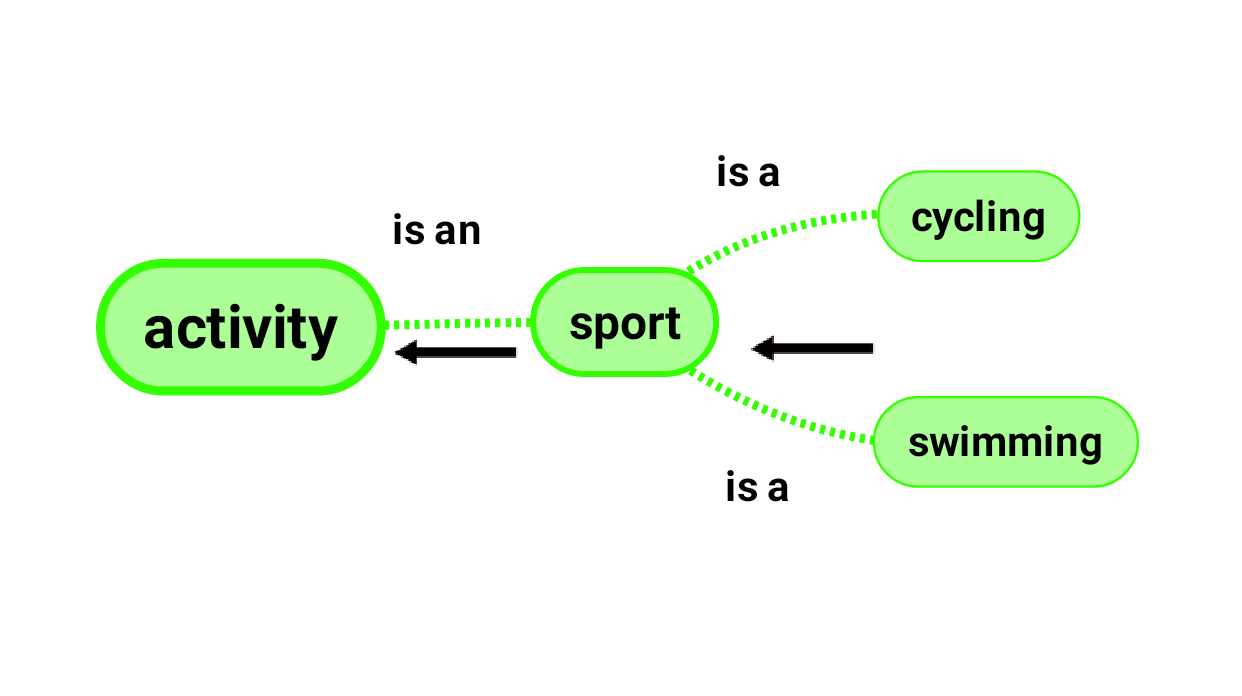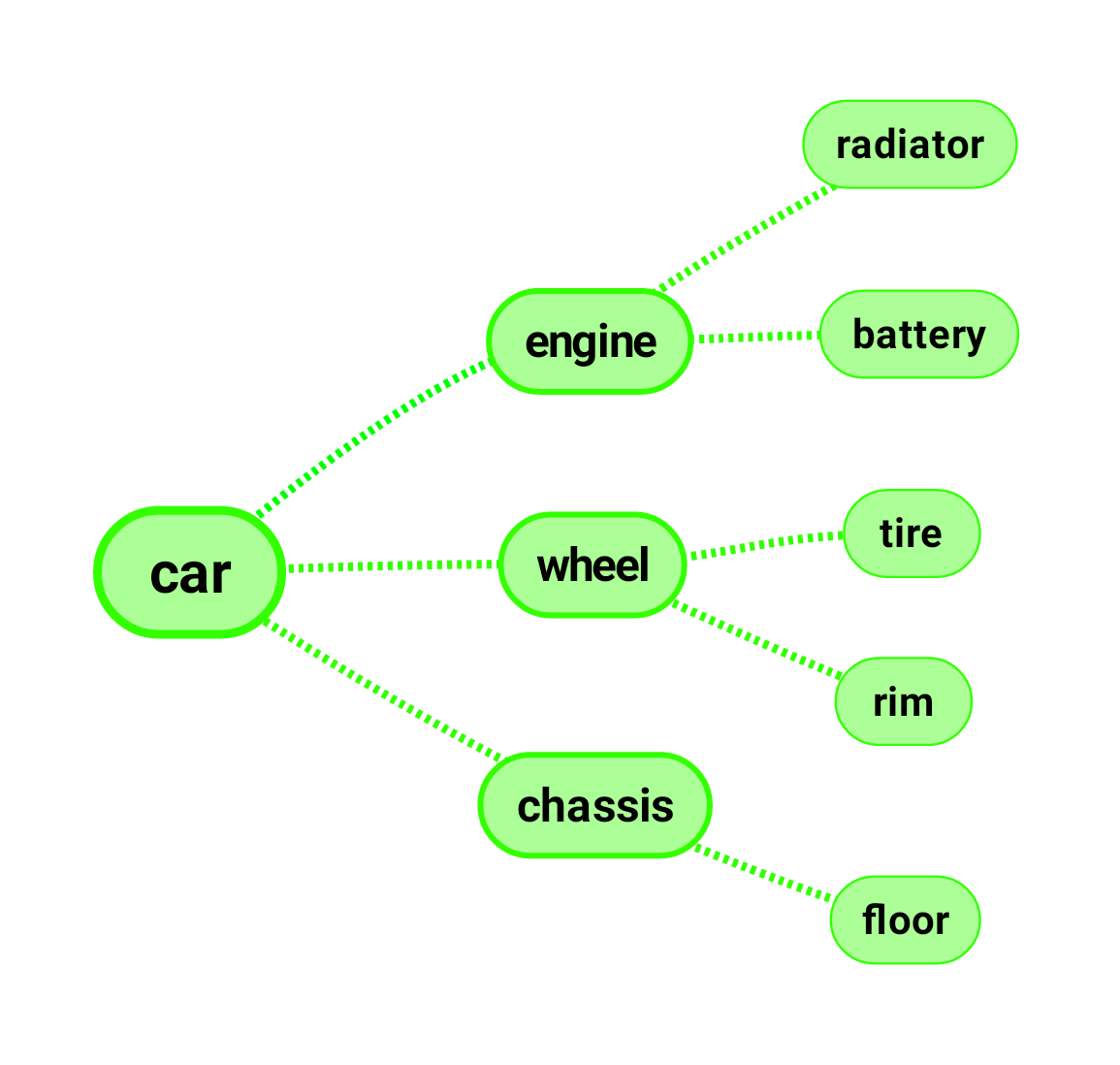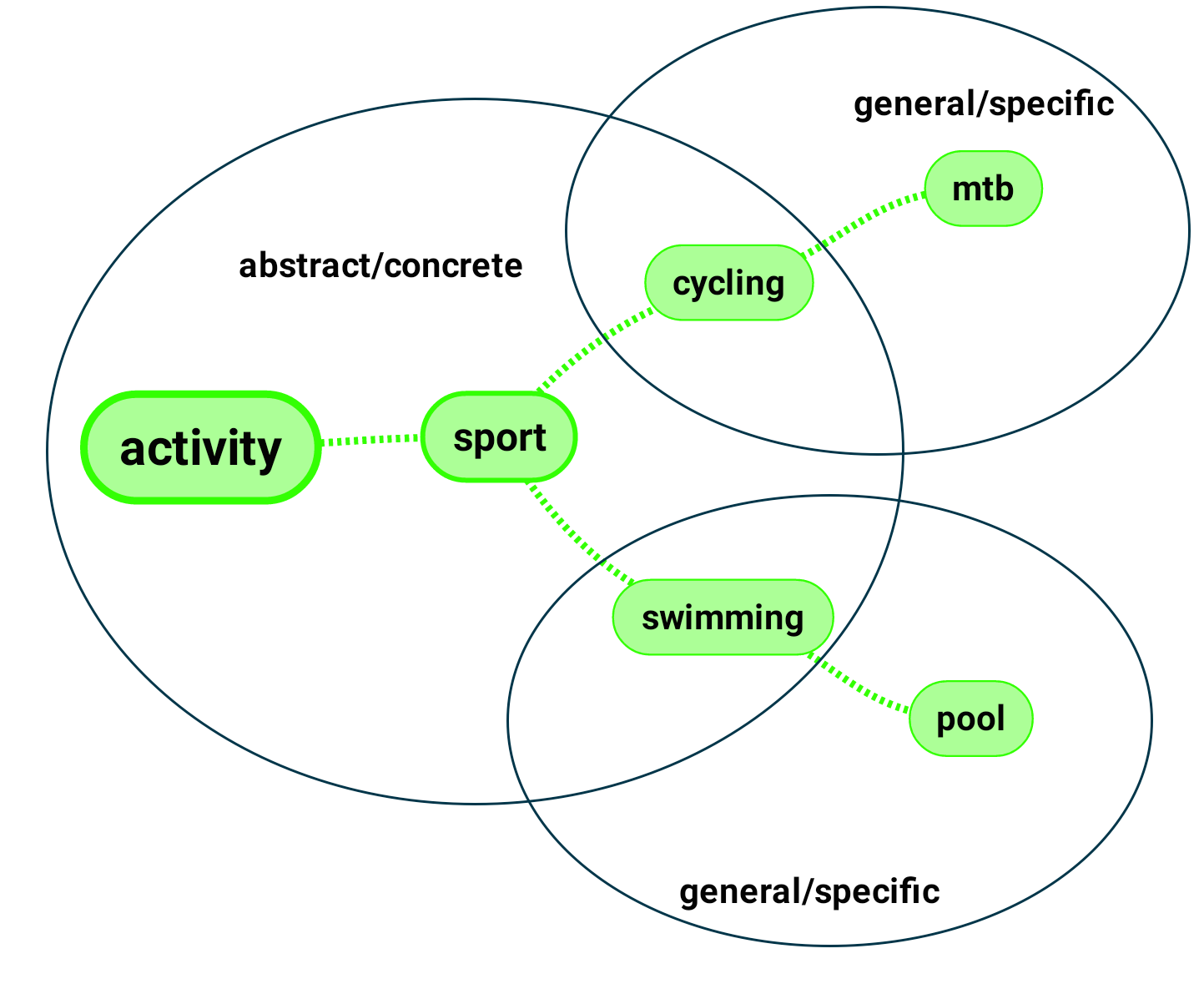Reading
Reading mind maps is interesting, because it allows us to see what and how other people think. By reading mind maps of others we gain a better understanding of the way mind maps are made. Let’s take a closer look.
Central theme
The central theme in the middle is a thought, a problem, title, theory or just an idea. From the central theme associations radiate out.

Fig.1 Central theme & associations
Reading order
The mind map is always read clockwise from 02.00 till 10.00 and from the inside to the outside.

Fig.2 Clock reading order
So read in numeric order:

Fig.3 The associations are read clockwise and from the inside to the outside
Ordering principles
Every mind map is different with its theme and associations. But also similarities and patterns can be found in the way associations are ordered.
1. General to specific
Associations can be ordered from general to more and more specific.

Fig.4 General ——————->more specific———————–> specific
General associations can be made more and more specific by adding details.

Fig.5 Specifics are added to Florence, the symbol lily and renaissance
Other examples:

Fig.6 Examples general — — —> specific
2. Abstract to concrete
Another way associations can be ordered is from abstract to concrete.

Fig.7 Abstract ———> more concrete——> concrete
When the associations are ordered from abstract to concrete, the word “is”, “is a” or “are” can be used between them. The reading order is backwards from right to left.

Fig.8 Cycling or swimming “is a” sport and sport “is an” activity
When something becomes more concrete, an image can be formed it. It’s something you can hold or do.
Another example:

Fig.9 Mozzarella “is” cheese and cheese “is” food
3. Whole to parts
Associations can also be ordered from whole to parts.

Fig.10 Whole & parts
When associations are ordered whole and parts, the word “is a part of” or “are part of” can be placed between the associations. The reading order is backwards, from outside to the centre.
The whole and parts belong together. The “family” only exists when it has members.

Fig.11 Julius “ is a part of” family

Example; a car has many parts
4. Techniques
In a mind map associations can be ordered in three different ways:

Fig.13 Three different types to order associations
There is a simple technique to distinguish them:
“is a”
If you can say “is a” between two associations, then there’s an abstract/concrete relation.
“is a part of”
If you can say “is a part of” between two associations, then there is a whole/parts relation.
The whole and parts also belong together (that’s different from abstract/concrete)
If you cannot relate the two associations in the ways above, then you are probably dealing with a general to specific relation.
5. Patterns
Patterns can often be seen in mind maps. The first level associations (or concepts) that are directly associated with the central theme are usually more general, abstract or whole.

Fig.14 General, whole and abstract concepts directly surround the theme
Associations further away from the theme become more specific, concrete or parts.

Fig.15 Specific, concrete and parts associations are deeper in the mind map
6. Mixing different types
Within a mind map different types of ordering may be mixed.

Fig.16 Mix of abstract/concrete and general/specific

Fig.17 Mix of abstract/concrete and general/specific

Fig.18 Mix of whole/parts and general/specific
Story telling
Every mind map tells a story with it’s theme and associations. It’s like a book. The central theme is the title. The associations from the theme are the chapters. The chapters are worked out into paragraphs and subparagraphs.

Fig.19 The mind map is like a book
Answers versus questions
A mind map usually consists of answers given to questions. The questions themselves are mostly not in the mind map. For a better understanding these questions can be reconstructed. The questions are often 5-w questions: what, why, who, where and when?
When a 5-w-question is successfully reconstructed, the answer in the mind map becomes more clear.

Fig.20 Each chapter of “Holiday” has one or more w-questions
Color & images
Color makes the mind map more interesting. It gives the mind map strength and makes it easier to read. Images guide attention and contain much more information than words.

Fig.21 The central theme “Holiday” is represented by a warm orange image. The symbolic sun matches intuitively and will flood your brain with memories of holidays past.
Different colored lines help to separate the different areas of the mind map. Color gives extra strength to the associations and it can have a meaning of it’s own.

Fig.22 The color green is used for “activity” because of it’s intuitive connection with health.
Images like the people, house, airplane and bike help remembering and distinguishing between the areas. These images often appear on the border of the mind map, because concrete and specific associations evoke images.